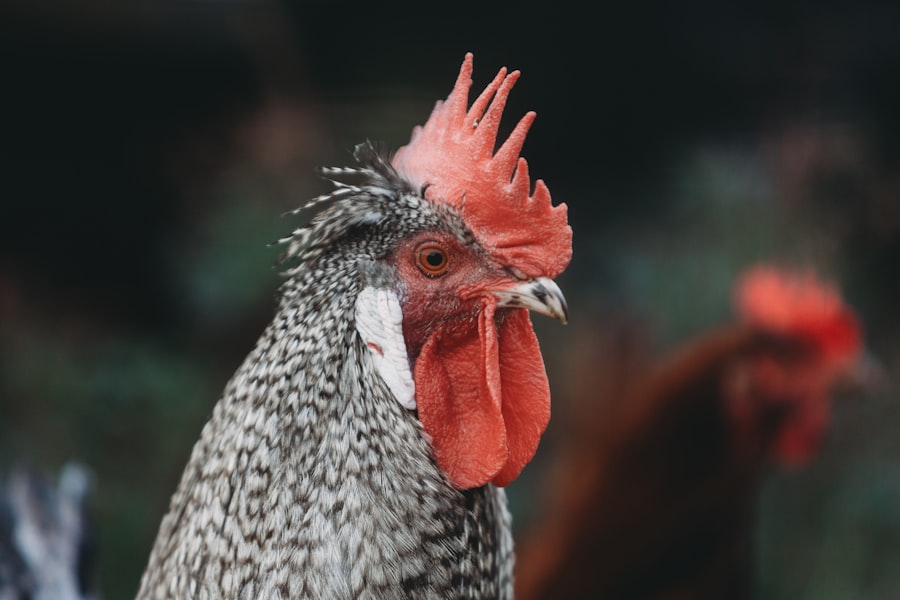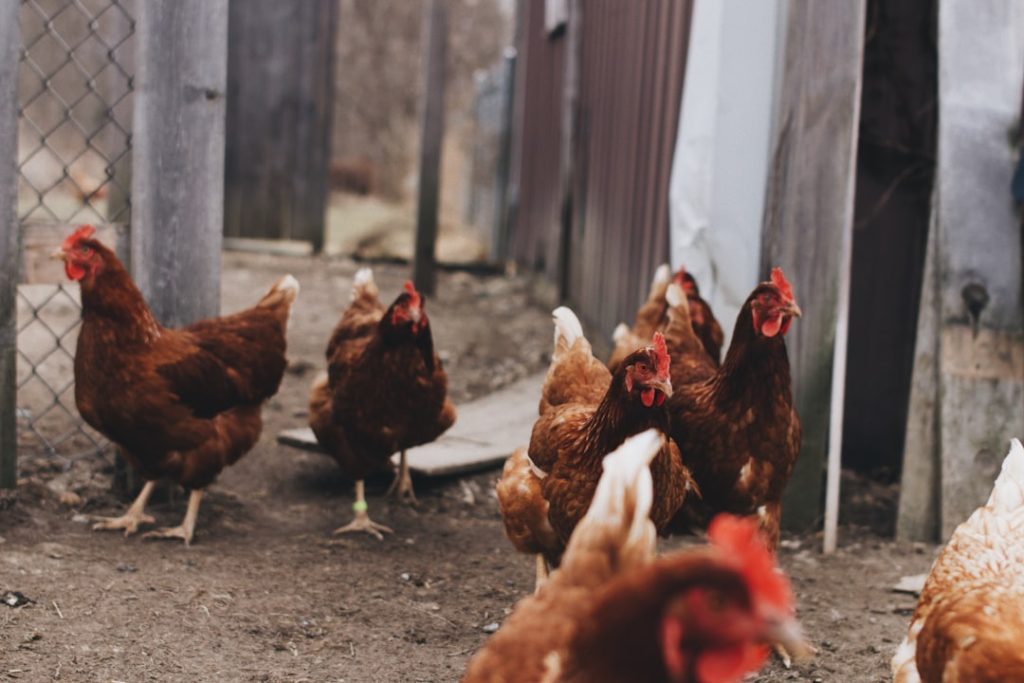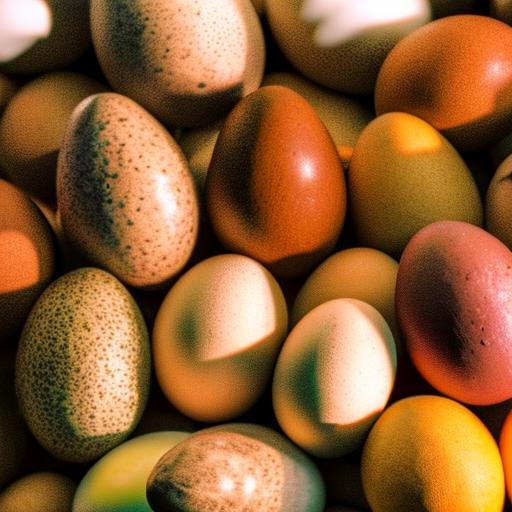Cross breeding, also known as hybrid breeding, is the process of mating two different breeds of the same species to create offspring with the desirable traits of both parents. In chicken breeding, this practice has been widely used for many years to develop birds suited for specific purposes, such as egg production, meat production, or ornamental use. The process can result in chickens with improved disease resistance, better feed conversion rates, and enhanced adaptability to specific environmental conditions.
Cross breeding has led to the creation of numerous chicken breeds popular among farmers and backyard poultry enthusiasts. The process of cross breeding is complex and requires careful selection of parent stock and meticulous record-keeping to ensure the transmission of desired traits to offspring. It is important to note that not all cross breeds will exhibit the desired traits, and multiple generations of selective breeding may be necessary to achieve the intended results.
When executed properly, cross breeding can produce chickens that are healthier, more productive, and better aligned with the breeder’s objectives.
Table of Contents
Key Takeaways
- Cross breeding involves mating two different breeds of chickens to create offspring with desirable traits.
- Benefits of cross breeding include increased disease resistance, better egg production, and improved meat quality.
- Popular cross breeds of chickens include the Black Sex Link, Red Sex Link, and Olive Egger.
- Characteristics of cross breeds can vary widely, but they often exhibit a combination of traits from both parent breeds.
- Care and maintenance of cross breeds involves providing a balanced diet, regular health checks, and a clean living environment.
- Challenges of cross breeding include the potential for unpredictable offspring traits and the need for careful selection of parent breeds.
- In conclusion, cross breeding offers many benefits for chicken farmers and the future of cross breeding looks promising for continued improvement in chicken genetics.
Benefits of Cross Breeding
Creating Multi-Purpose Chickens
Cross breeding allows breeders to create chickens that are well-suited to their specific needs. For example, crossing a breed known for its egg-laying abilities with a breed known for its meat production can result in chickens that are good layers and also produce high-quality meat. This is particularly beneficial for small-scale farmers who may not have the resources to raise separate flocks for egg and meat production.
Increased Disease Resistance
Another significant advantage of cross breeding is the potential for increased disease resistance. By combining the genetic traits of two different breeds, breeders can create chickens that are more resilient to common diseases and parasites. This can result in lower mortality rates and reduced reliance on antibiotics and other medications, which can be both costly and potentially harmful to the birds and the environment.
Adaptability to Environmental Conditions
Cross breeding can also result in chickens that are better suited to specific environmental conditions, such as extreme heat or cold. This can be particularly important for farmers in regions with harsh climates, as it can help ensure the health and productivity of their flocks.
Popular Cross Breeds of Chickens

There are many popular cross breeds of chickens that have been developed for specific purposes. One example is the Black Sex Link, which is a cross between a Rhode Island Red rooster and a Barred Plymouth Rock hen. This cross results in a chicken that is known for its excellent egg-laying abilities and friendly disposition.
Another popular cross breed is the Red Sex Link, which is created by crossing a Rhode Island Red rooster with a White Plymouth Rock hen. This breed is also prized for its high egg production and is often used in commercial egg production operations. The Cornish Cross is another well-known cross breed that is specifically bred for meat production.
This breed is a cross between a White Plymouth Rock hen and a White Cornish rooster and is known for its rapid growth and efficient feed conversion. The resulting birds are typically ready for processing at around 8 weeks of age and are prized for their tender, flavorful meat. In addition to these examples, there are countless other cross breeds that have been developed for various purposes, including ornamental breeds with unique feather patterns and colors.
These cross breeds offer a wide range of options for farmers and backyard chicken enthusiasts who are looking for birds with specific traits and characteristics.
Characteristics of Cross Breeds
Cross breeds of chickens can exhibit a wide range of characteristics, depending on the traits inherited from their parent breeds. In general, cross breeds are bred to exhibit specific traits such as high egg production, rapid growth, or unique physical characteristics. For example, a cross breed created for egg production may inherit the high egg-laying abilities of one parent breed while also exhibiting the hardiness and disease resistance of the other parent breed.
Cross breeds can also exhibit a wide range of physical characteristics, including unique feather patterns and colors. This can make them particularly attractive to backyard chicken enthusiasts who are looking for birds with distinctive appearances. Additionally, cross breeds may also exhibit variations in size and shape, depending on the traits inherited from their parent breeds.
It is important to note that not all cross breeds will exhibit the desired traits, and it may take several generations of selective breeding to achieve consistent results. However, when done correctly, cross breeding can result in chickens that are well-suited to the needs of the breeder and exhibit a wide range of desirable characteristics.
Care and Maintenance of Cross Breeds
Caring for cross breeds of chickens is similar to caring for purebred chickens, but there are some important considerations to keep in mind. One key aspect of caring for cross breeds is providing them with a balanced diet that meets their specific nutritional needs. For example, if a cross breed has been developed for egg production, it will require a diet that is high in calcium to support strong eggshells.
On the other hand, if a cross breed has been developed for meat production, it will require a diet that is high in protein to support rapid growth. In addition to providing a balanced diet, it is important to ensure that cross breeds have access to clean water at all times and are housed in clean, well-ventilated coops or housing facilities. Regular health checks and vaccinations are also important to ensure that cross breeds remain healthy and productive.
Furthermore, it is important to provide cross breeds with adequate space to move around and engage in natural behaviors such as scratching and dust bathing. This can help prevent behavioral issues and promote overall health and well-being.
Challenges of Cross Breeding

Unpredictable Results
One of the main challenges of cross breeding is the potential for unpredictable results. When crossing two different breeds, not all offspring will exhibit the desired traits, and it may take several generations of selective breeding to achieve consistent results. This can be a time-consuming and resource-intensive process for breeders.
Genetic Issues
Another challenge of cross breeding is the risk of genetic issues arising in the offspring. When two different breeds are crossed, there is a risk of genetic abnormalities or health issues occurring in the offspring. This can be particularly problematic if breeders are not careful in selecting parent stock or fail to keep detailed records of their breeding programs.
Maintaining Genetic Diversity
Furthermore, breeders must also be mindful of maintaining genetic diversity within crossbred populations. If breeders rely too heavily on a small number of crossbred lines, it can lead to inbreeding and reduced genetic diversity, which can have negative effects on the health and productivity of the birds.
Despite these challenges, many breeders find that the benefits of cross breeding outweigh the potential drawbacks and continue to work towards creating new and improved cross breeds that meet the needs of farmers and backyard chicken enthusiasts.
Conclusion and Future of Cross Breeding
In conclusion, cross breeding chickens offers numerous benefits, including the ability to create birds with specific traits that are well-suited to the needs of the breeder, increased disease resistance, and better adaptation to specific environmental conditions. There are many popular cross breeds of chickens that have been developed for specific purposes, including egg production, meat production, and ornamental purposes. Cross breeds can exhibit a wide range of characteristics, including unique physical traits and variations in size and shape.
Caring for cross breeds requires providing them with a balanced diet that meets their specific nutritional needs, access to clean water at all times, clean housing facilities, regular health checks, vaccinations, and adequate space to move around and engage in natural behaviors. While there are some challenges associated with cross breeding chickens, many breeders continue to work towards creating new and improved cross breeds that meet the needs of farmers and backyard chicken enthusiasts. The future of cross breeding looks promising as breeders continue to develop new lines with desirable traits and work towards maintaining genetic diversity within crossbred populations.
With careful selection of parent stock and meticulous record-keeping, breeders can continue to create chickens that are healthier, more productive, and better suited to the needs of the breeder.
If you’re interested in learning more about cross breeds of chickens, you might also want to check out this article on duck mating season. It provides valuable information on the breeding habits of ducks, which can be helpful for anyone looking to breed different types of poultry.
FAQs
What are cross breeds of chickens?
Cross breeds of chickens are the result of breeding two different purebred chicken breeds together. This is done to create chickens with specific desired traits, such as egg-laying ability, meat quality, or unique feather colors.
What are some common cross breeds of chickens?
Some common cross breeds of chickens include the Black Sex Link, Red Sex Link, and Easter Egger. These cross breeds are known for their high egg production, friendly dispositions, and colorful eggs.
What are the advantages of cross breeds of chickens?
Cross breeds of chickens often exhibit hybrid vigor, which can result in improved health, productivity, and overall hardiness. They may also possess a combination of desirable traits from both parent breeds.
Are there any disadvantages to cross breeds of chickens?
One potential disadvantage of cross breeds of chickens is that their offspring may not consistently exhibit the desired traits of the parent breeds. Additionally, some cross breeds may be less standardized in terms of appearance and behavior compared to purebred chickens.
How do I choose the right cross breed of chicken for my needs?
When choosing a cross breed of chicken, consider your specific needs and preferences, such as egg production, meat quality, temperament, and climate adaptability. Research the characteristics of different cross breeds to find the best fit for your situation.
Meet Walter, the feathered-friend fanatic of Florida! Nestled in the sunshine state, Walter struts through life with his feathered companions, clucking his way to happiness. With a coop that’s fancier than a five-star hotel, he’s the Don Juan of the chicken world. When he’s not teaching his hens to do the cha-cha, you’ll find him in a heated debate with his prized rooster, Sir Clucks-a-Lot. Walter’s poultry passion is no yolk; he’s the sunny-side-up guy you never knew you needed in your flock of friends!







